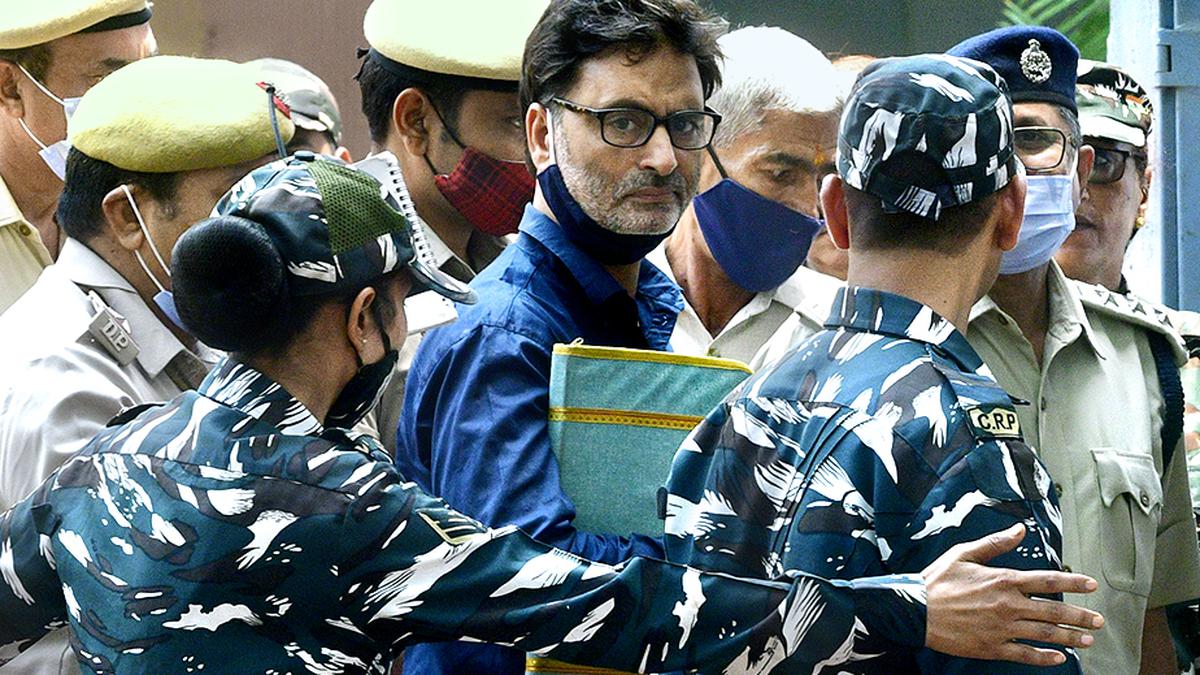 |
|
The Supreme Court of India grappled with a complex legal and security dilemma on November 21, 2024, concerning the trial of Kashmiri separatist Yasin Malik. Malik, facing charges related to the 1989 killing of four Air Force personnel, had been granted permission by a Jammu court to appear in person to cross-examine witnesses. However, this decision sparked immediate and strong objections from the Central Bureau of Investigation (CBI), the primary investigating agency in the case. The CBI argued that transporting Malik to Jammu posed an unacceptable security risk, highlighting the assassination of a witness already involved in the trial as evidence of the potential dangers. The Solicitor General, Tushar Mehta, representing the CBI, underscored the gravity of the situation, stating that the government could not adhere to standard procedure in this case due to the exceptional security concerns. He further claimed that Malik had engaged in manipulative tactics, choosing to personally cross-examine witnesses rather than utilize legal counsel, and alleged that Malik maintained contact with Hafiz Saeed, the founder of the Lashkar-e-Taiba terrorist organization. This painted a picture of a defendant potentially using the legal process for strategic advantage, escalating security concerns.
Justice A.S. Oka, in response to the CBI's concerns, raised the possibility of establishing a courtroom within the Delhi jail where Malik is currently incarcerated. This innovative solution aimed to balance Malik's right to a fair trial with the imperative need to ensure the safety and security of witnesses, court officials, and the general public. The suggestion implicitly acknowledged the difficulties associated with transporting Malik to Jammu and the potential logistical challenges of facilitating his virtual presence in the Jammu court. While Justice Oka initially explored the feasibility of virtual court appearances, concerns were raised about the reliability of online connectivity in Jammu, leading the court to favor the in-jail courtroom alternative. The Solicitor General raised no objections to this proposal, indicating a willingness to collaborate with the court to find a solution that respects due process while effectively mitigating the risks.
The Supreme Court's decision highlights the complexities of balancing the rights of the accused with the demands of national security. The case of Yasin Malik underscores the challenges of prosecuting individuals accused of serious crimes, especially those with alleged ties to transnational terrorist organizations. The court’s willingness to explore unconventional methods, such as setting up an in-jail courtroom, reflects an attempt to navigate the intricate legal and practical considerations involved. The fact that the court drew a parallel between Malik’s case and that of Ajmal Kasab, the 26/11 Mumbai terrorist who was given a fair trial, underscores the principle that even those accused of the most heinous crimes are entitled to due process. However, the overriding security concerns in Malik's case, reinforced by the previous incident in July 2024 where Malik's brief appearance before the Supreme Court caused a significant security disruption, necessitated the search for a more secure and controlled environment for the proceedings. The court’s adjournment to November 28, allowing time for the CBI to amend its petition and include other accused parties, demonstrates a commitment to ensuring a comprehensive and thorough judicial process.
The broader implications of this case extend beyond the specific circumstances of Yasin Malik's trial. It sets a precedent for handling high-profile cases with significant security implications. The Supreme Court's actions suggest a potential shift in the approach to conducting trials involving individuals with strong ties to terrorist organizations, acknowledging the need for innovative solutions to protect witnesses and maintain public order. The solution of establishing a courtroom within a jail offers a pathway for ensuring fair trials while addressing serious security risks. This case could influence future legal proceedings involving individuals considered high security risks, prompting a re-evaluation of existing protocols and procedures for conducting trials in complex and sensitive situations. The continued focus on protecting witnesses is paramount in achieving justice while upholding the integrity of the judicial system. The ongoing case serves as a critical reminder of the delicate balance between protecting citizens and ensuring that even accused terrorists are provided a fair trial within the bounds of the law.
The decision of the Supreme Court to propose an in-jail courtroom for Yasin Malik reflects a measured approach that attempts to resolve the competing demands of due process and national security. While ensuring a fair trial remains paramount, the court's actions highlight the exceptional measures sometimes required to balance legal obligations with the pressing reality of significant security risks. The case raises broader questions regarding the implementation of security protocols in high-profile trials, and the effectiveness of existing mechanisms in safeguarding witnesses and preventing disruptions to the judicial process. The ongoing developments in this case will undoubtedly be closely followed by legal experts and security professionals alike, shaping future approaches to similar situations. The case continues to evolve, and the ultimate outcome will likely depend on how well the practicalities of establishing and operating an in-jail courtroom are addressed, and the subsequent handling of the security implications throughout the duration of the trial.
Source: SC suggests setting up courtroom in jail for Kashmiri separatist Yasin Malik amid security concerns
